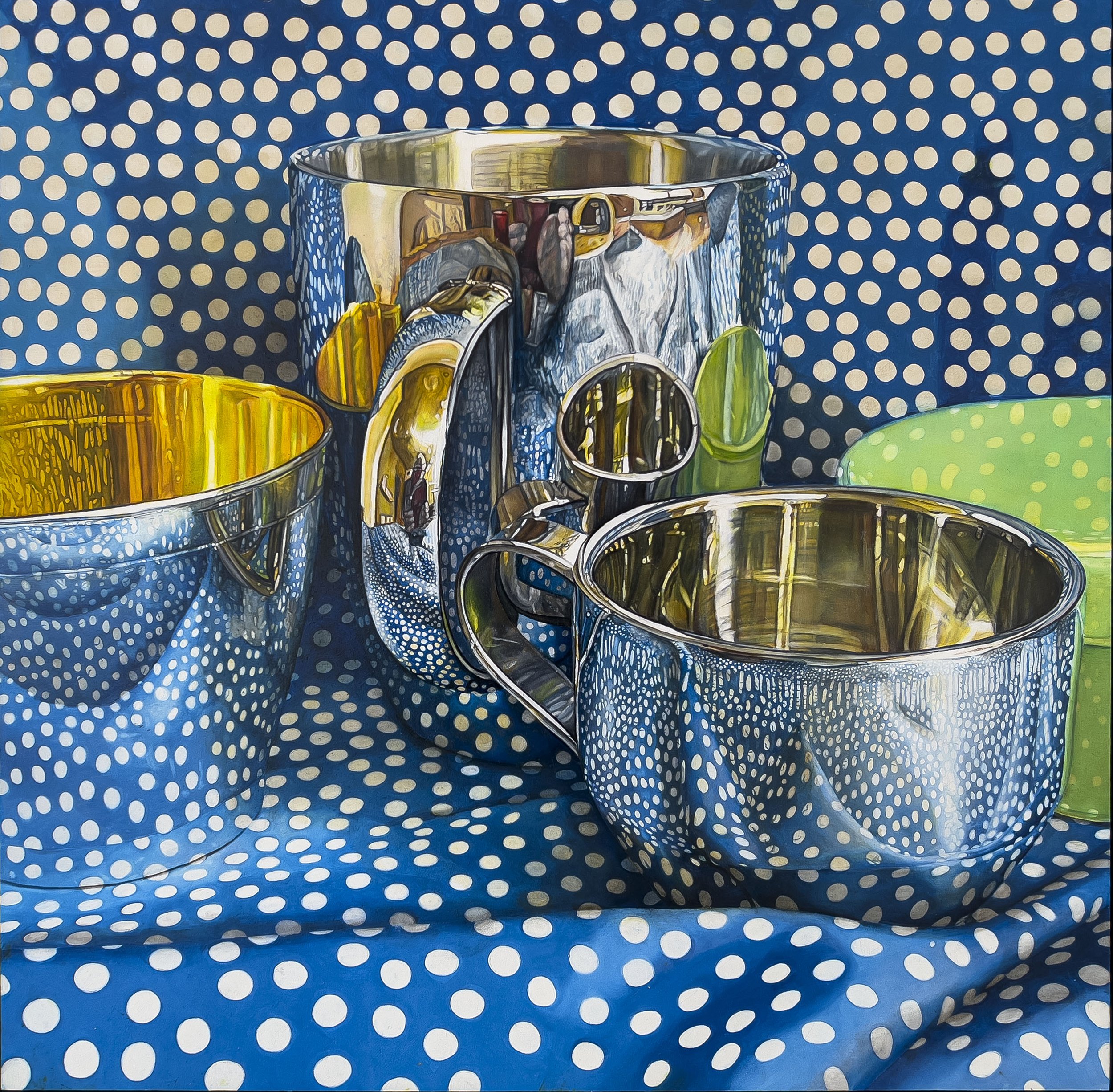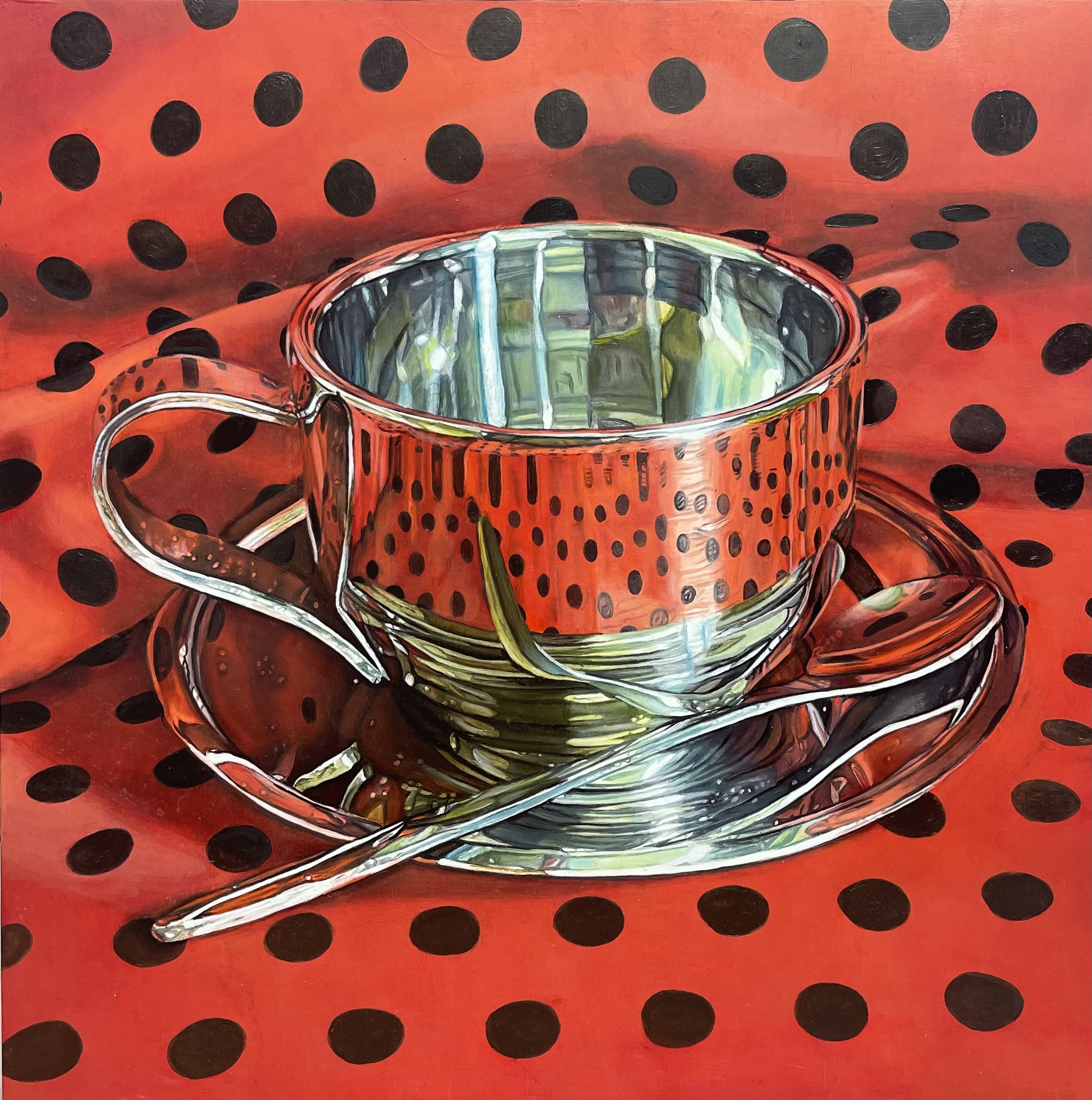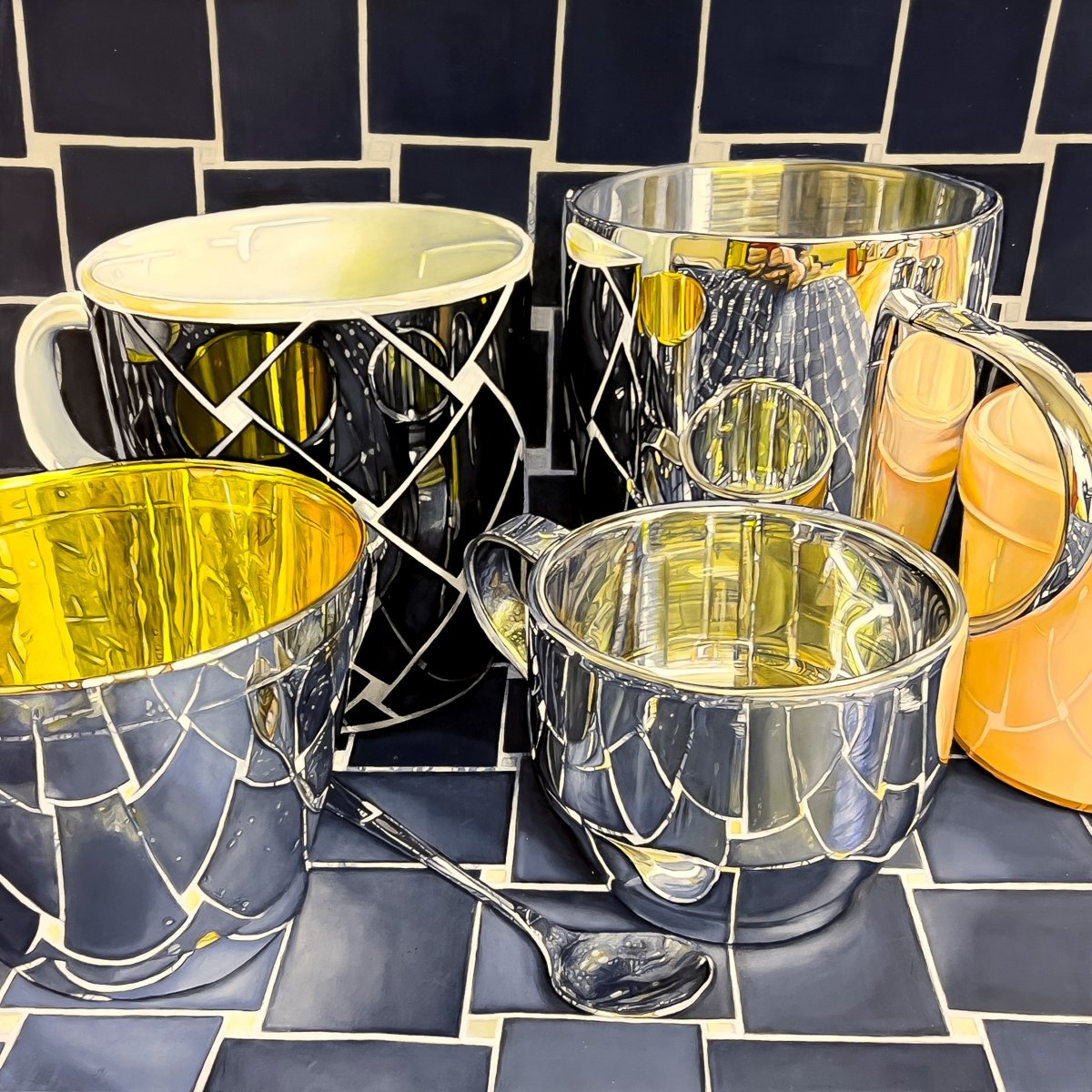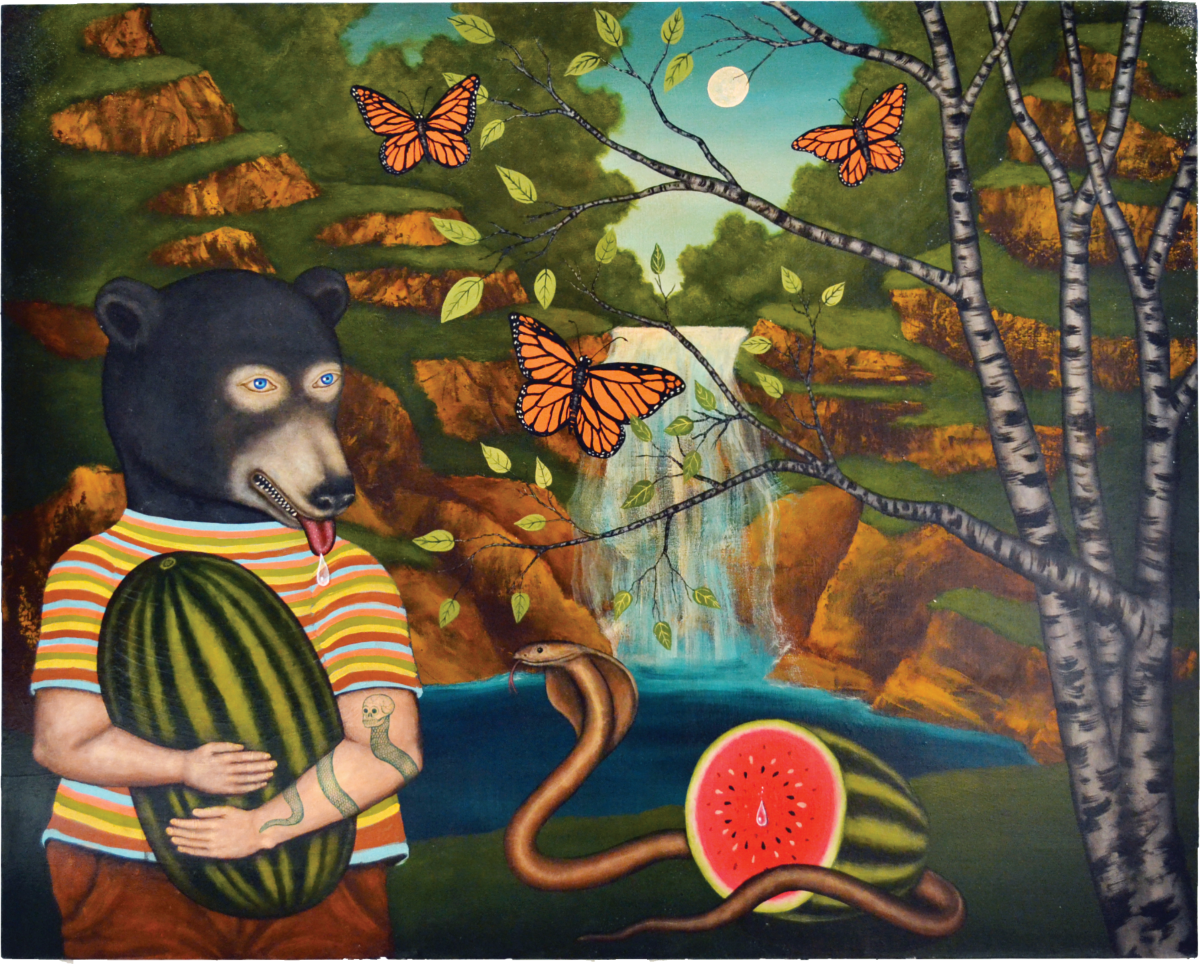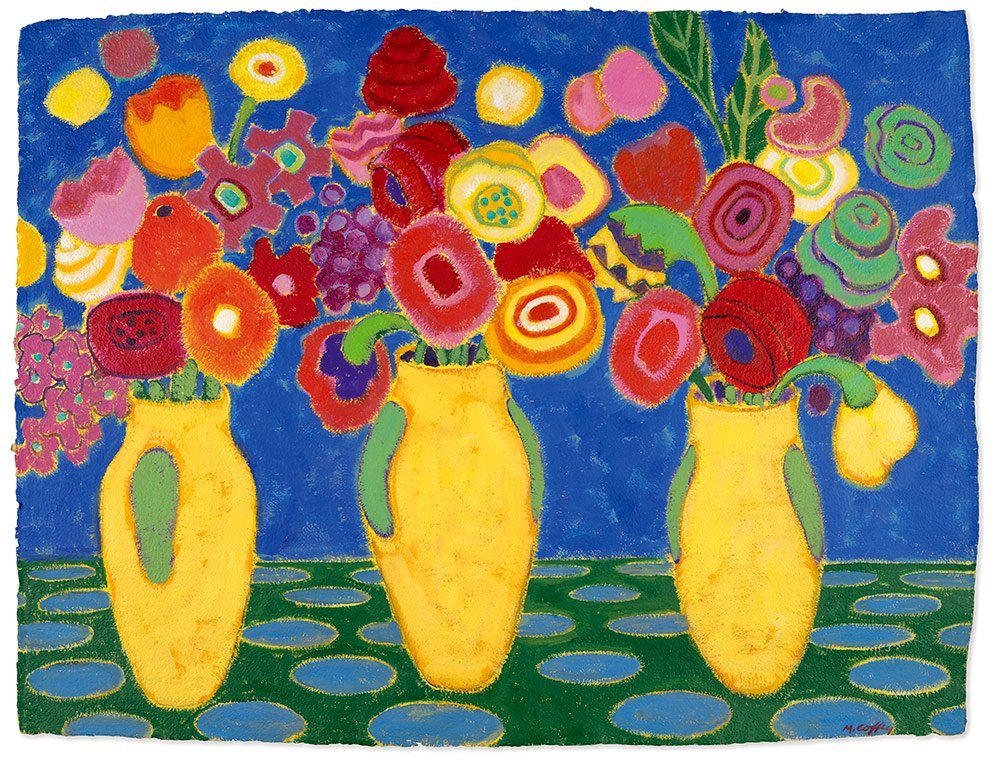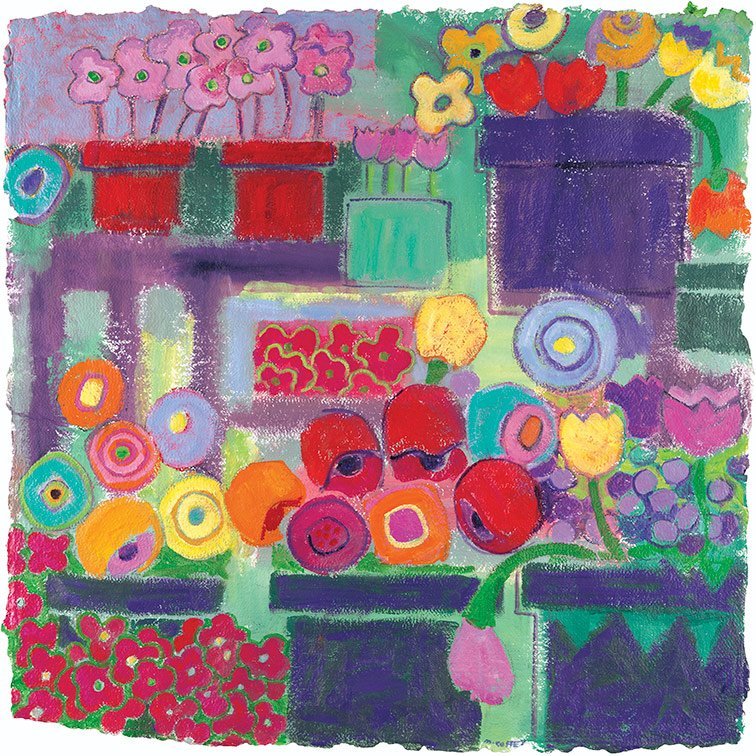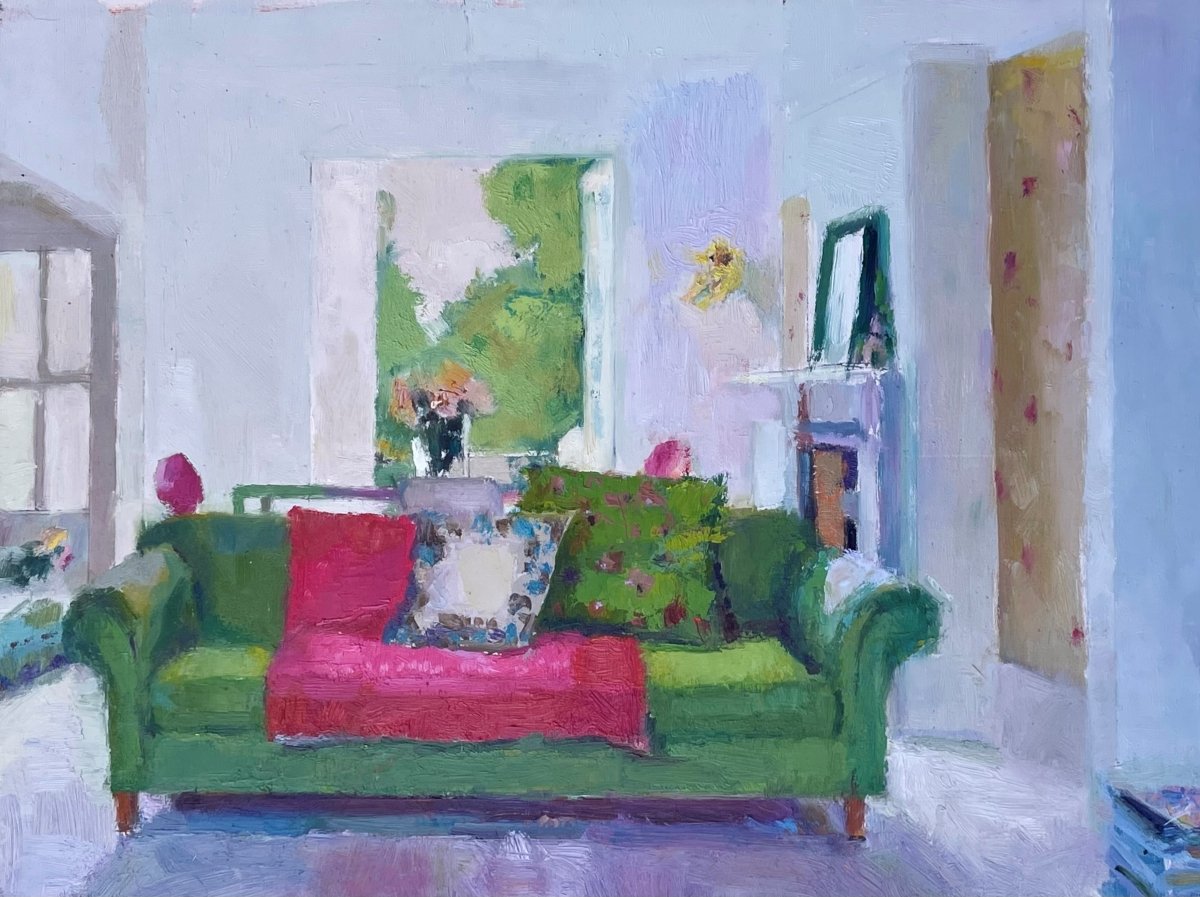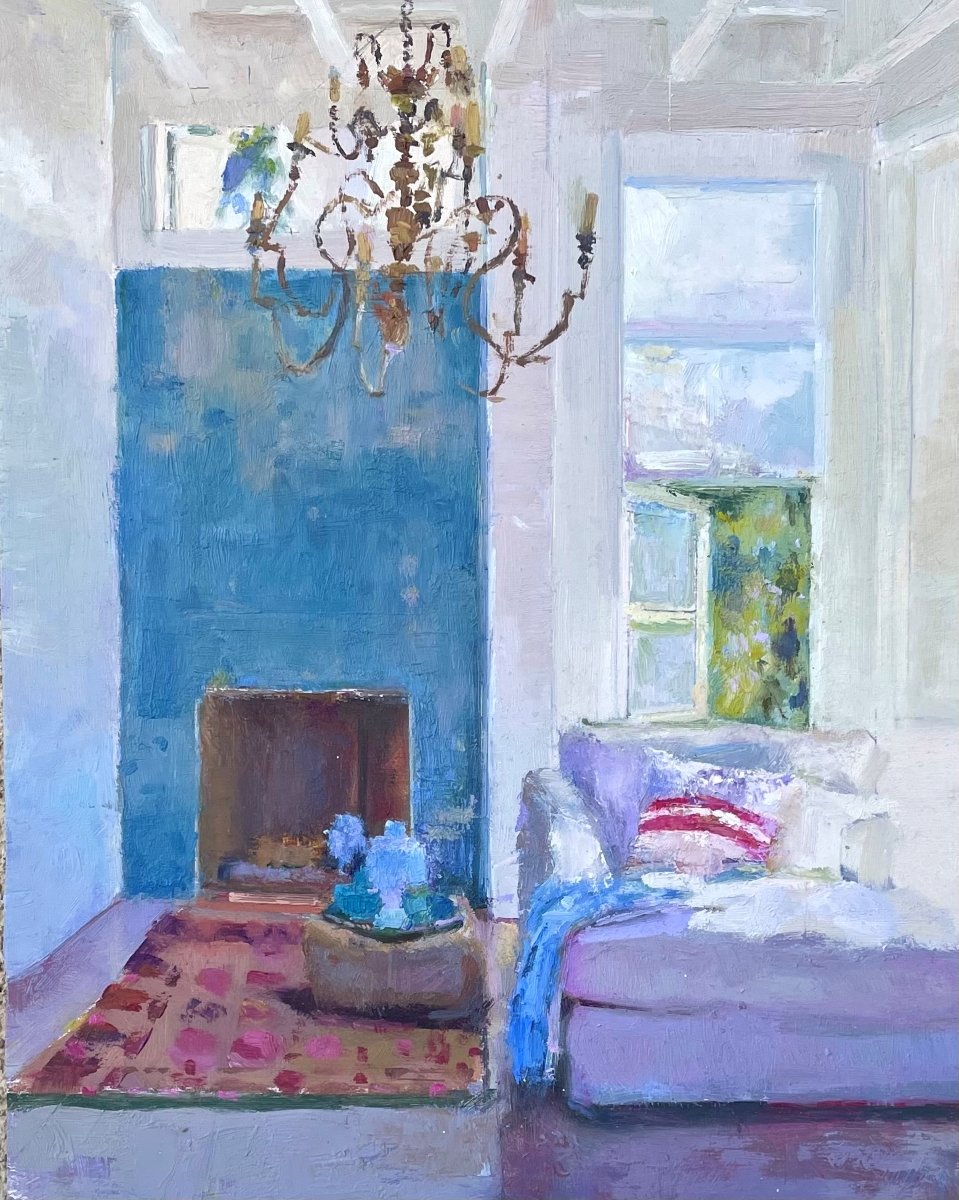Five to Watch
by: Allison Malafronte
The plein air paintings being created by BETHANN MORAN HANDZLIK (b. 1965) are impressive not only for the amount of detail, vibrant color, and emotional content they capture but also for their sheer size, often averaging 50 inches in each direction. The Wisconsin artist does not paint small sketches outdoors to quickly gather information for larger studio landscapes. Rather, she completes almost the entire painting outdoors, sometimes spending weeks in the same spot to capture what she sees.
Take This Joy Is Electric, for example, which found the artist standing along a busy highway in Whitewater, Wisconsin, for more than two weeks in order to compose this large scene of a sunflower field. “No doubt there are challenges to working on large canvases outside for a prolonged time,” Moran-Handzlik admits. “I painted this at the end of August — I got sunburned and wind-whipped and had to strap the canvas to my van at one point to keep it from blowing around. However, it’s worth the effort. The changing light, animal sounds, and smell of the air all contribute something toward the final painting, as it evolves within the same conditions it depicts.”
BETHANN MORAN HANDZLIK (b. 1965), This Joy Is Electric, 2021, oil on canvas, 52 x 40 in.,
Moran Handzlik describes her experiences painting in nature in almost spiritual terms; during many hours of concentration she will lose herself in the composition, snapping back to reality only due to a pesky mosquito bite or falling temperatures. “Sometimes while painting, language leaves me,” she says. “Sometimes I feel like I disappear. When the painting is complete the viewer can re-see, re-experience what I saw, and then be drawn repeatedly into contemplation of everything within the painting and within themselves. My hope is that the paintings will help create an appreciation for the natural world and assist people on their paths toward joy.”
Moran Handzlik earned a B.A. from Wisconsin’s St. Norbert College and then an M.F.A.from the University of Wisconsin — Milwaukee. She has taught at several universities and teaches workshops regularly. This summer she will offer a plein air workshop at the Peninsula School of Art in Door County, and early next year she will return to Scotland to teach and paint. Moran Handzlik was recently a guest on artist Jeff Hein’s The Undraped Artist Podcast. She and her husband, the poet Patrick J. Moran, have three children and live in Fort Atkinson, Wisconsin.






